Secateurs are one of your most important gardening tools and will get used most times you go out into the garden. Thats why, if you’re a new gardener, you should invest in a good pair. Most long-time gardeners have a favourite pair they’ve been using for years but tragedy can strike and those long-loved secateurs are lost or damaged. Here’s a handy three part guide about how you should choose, clean and sharpen your secateurs.
Listen as I talk with Tony Mattson of Cut Above Tools all things secateurs…
PART 1 – Choosing the right secateurs
There’s a huge range of secateurs on the market, in style, size and the materials from which they are made. Some secateurs will be better for a particular job, and other types for different uses so you may want to have more than one pair.
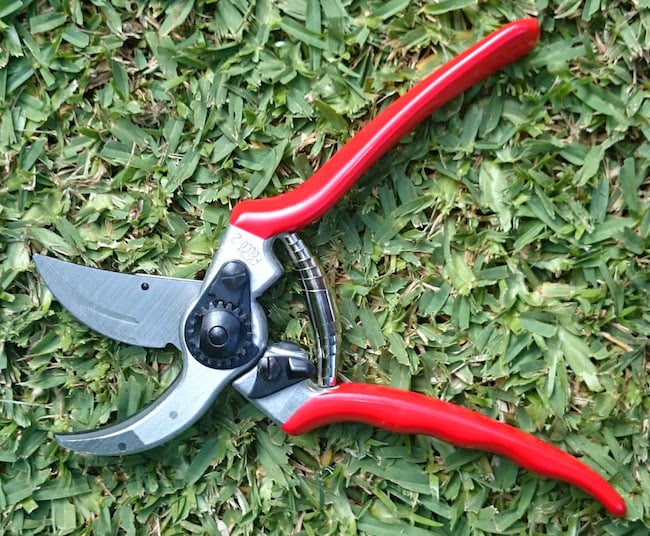
Many gardener’s favourite secateurs – Felco No 2
Bypass secateurs have two blades and their action is just like a pair of scissors, with the blades passing close together to make a clean cut. Bypass secateurs are ideal for making fine cuts, especially on small and delicate stems as the scissor action doesn’t bruise the stem. Bypass secateurs are available in right and left-handed versions and also some have a rolling handle.
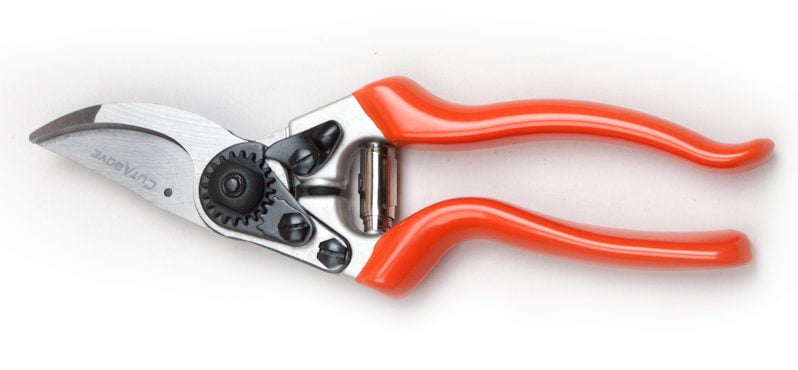
Left-handed bypass secateurs
Check also how the secateurs clip open and closed and that you can do it easily with your thumb and that they don’t open beyond your handspan or you may need a smaller pair. Some secateurs have a way of winding in the handle spread but be mindful that it will also reduce the opening of the blades.
Anvil secateurs have a single blade, angled on both sides like a knife, which closes against a flat surface, so that makes them a better choice if you’ve got hard, woody stems to cut or the material is very sappy, as it won’t get stuck in the blades as much. Anvil secateurs also come in a ratchet or geared form making them easier for those with weaker hands or arthritis.
#gallery-1 {margin: auto;}#gallery-1 .gallery-item {float: left;margin-top: 10px;text-align: center;width: 33%;}#gallery-1 img {border: 2px solid #cfcfcf;}#gallery-1 .gallery-caption {margin-left: 0;}/* see gallery_shortcode() in wp-includes/media.php */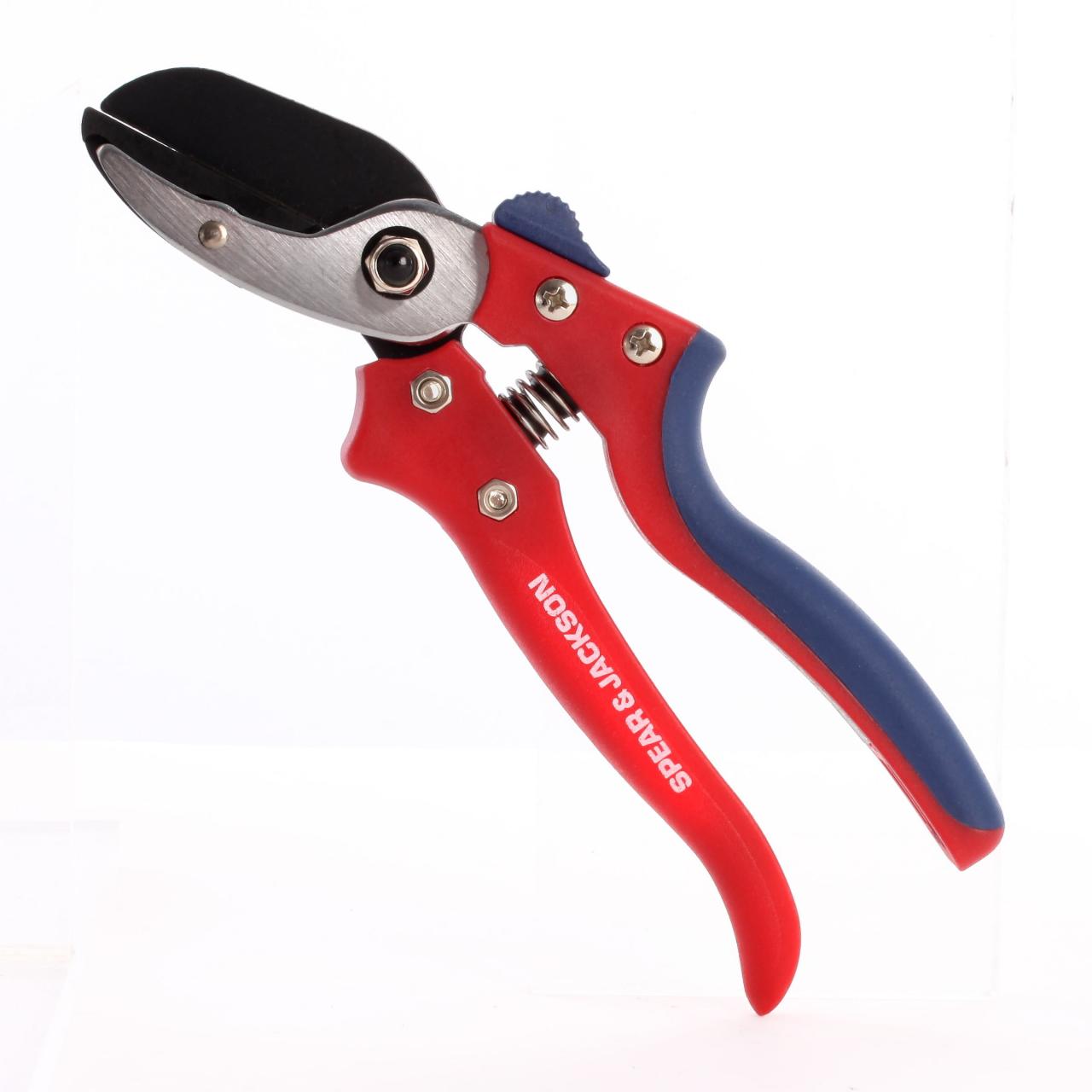 Spear and Jackson anvil secateurs
Spear and Jackson anvil secateurs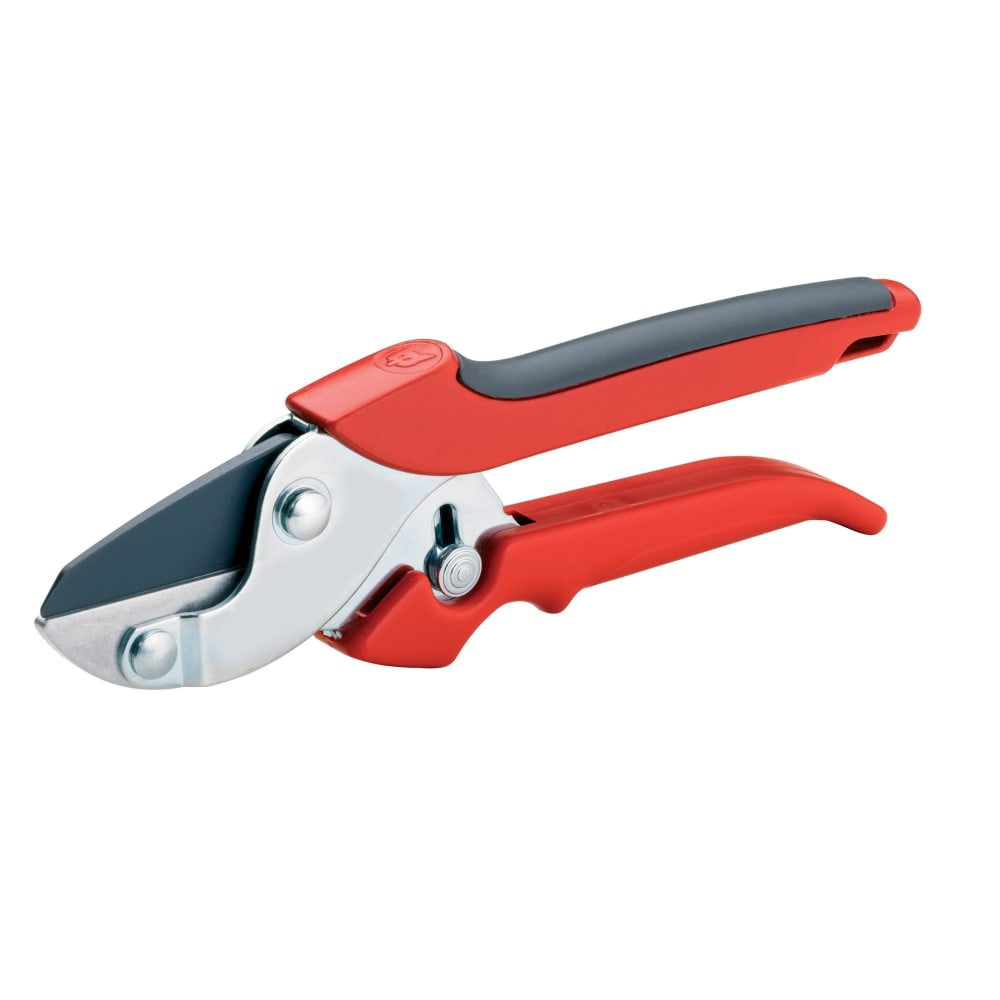 Wolf Anvil secateur
Wolf Anvil secateur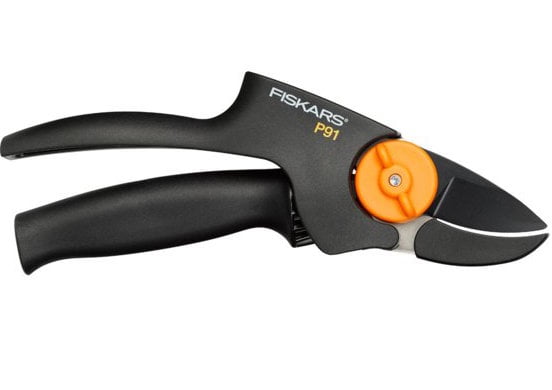 Fiskars powergear anvil secateurs
Fiskars powergear anvil secateurs
Snips are also bypass or scissor style but they have long, narrow blades, excellent for cutting flowers, deadheading and more delicate work.
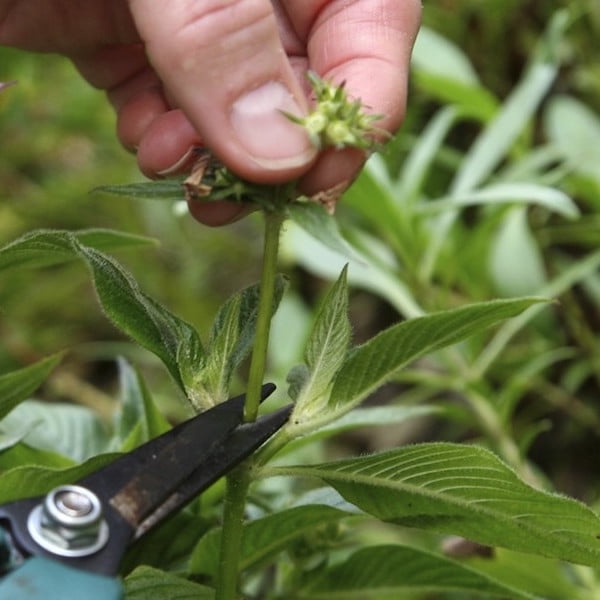
Snips are useful for fine work like cutting off spent flowers (deadheading)
Secateur blades – the better quality secateurs have steel blades with around 0.8% carbon which means they can take regular sharpening but are not too brittle. All-steel blades are used by some plant nurseries for working on acidic plant material, like eggplants.
Listen while Tony gives more details about choosing the right secateurs for you and the job…
https://gardendrum.com/wp-content/uploads/2017/05/Choosing-the-right-secateur.mp3
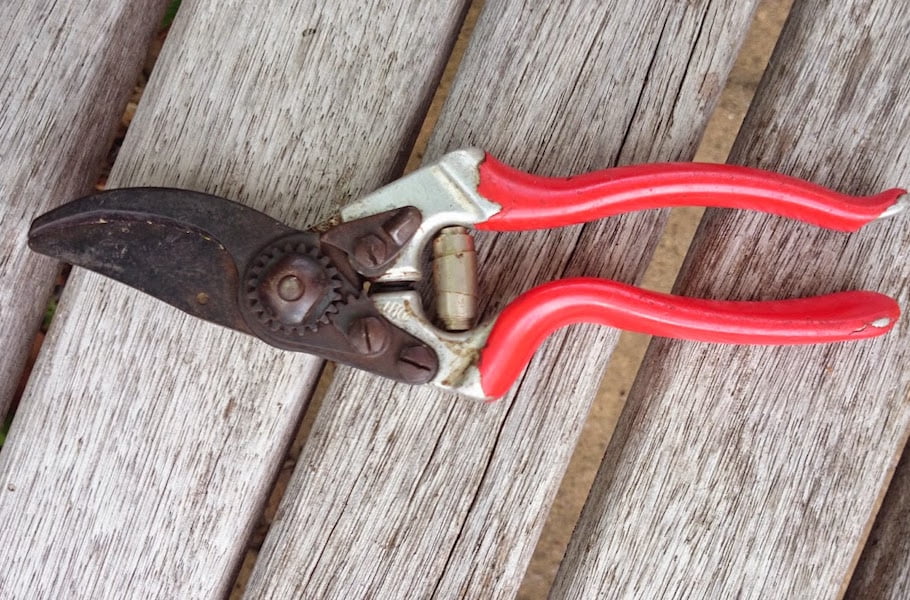
Bypass secateurs in need of a good clean
PART 2 – Caring for and cleaning your secateurs
Secateurs are for cutting small stems, so never cut anything thicker than your thumb with them. If it’s bigger, get the loppers! Otherwise you’re likely to permanently damage the secateurs, or yourself.
When using your secateurs in the garden, you need to remember that as you prune away diseased and damaged parts of a plant, those bacteria, fungal spores and viruses will stick to the blades. As you move on to prune something else, you’re taking those diseases with you and possibly infecting the next plant. Keep a spray bottle with a solution of 70% methylated spirits in water, or a 10% bleach solution handy with which to spray your secateurs.
Tony explains why you need to keep your tools clean…
https://gardendrum.com/wp-content/uploads/2017/05/Caring-for-and-disinfecting-your-secateurs.mp3
We’ve all been guilty of using our secateurs in the garden and then putting them down in the garden when we suddenly see something else we need to do. And then it rains overnight and by the time we remember to look for them they’ve already suffered. Or perhaps you’ve left them with a whole lot of sticky sap stuck on the blades. What can you do to bring them back to good condition? Tip – you’ll need that meths-water mix, a brass brush from the hardware store (you can use a scourer but you’ll risk cutting your fingers), machine oil (like sewing machine oil) and an old cloth.
Tony goes through the important cleaning steps…
https://gardendrum.com/wp-content/uploads/2017/05/Cleaning-your-secateurs.mp3
PART 3 – Sharpening your secateurs
If you let your secateurs get blunt, you risk tearing the plants you’re cutting which gives entry points for disease on those jagged cuts. Watch as you work to make sure the cuts are clean. Blunt secateurs also take a lot more effort to use so your hands will tire quickly as you work.

Tools for sharpening your secateurs
Traditionally, bypass secateurs were taken apart and the outside or chamfered edge of the cutting blade sharpened with a wet stone or diamond stone. (Never sharpen the flat side!). Anvil secateurs need to have both sides of the cutting blade sharpened, just like a knife.
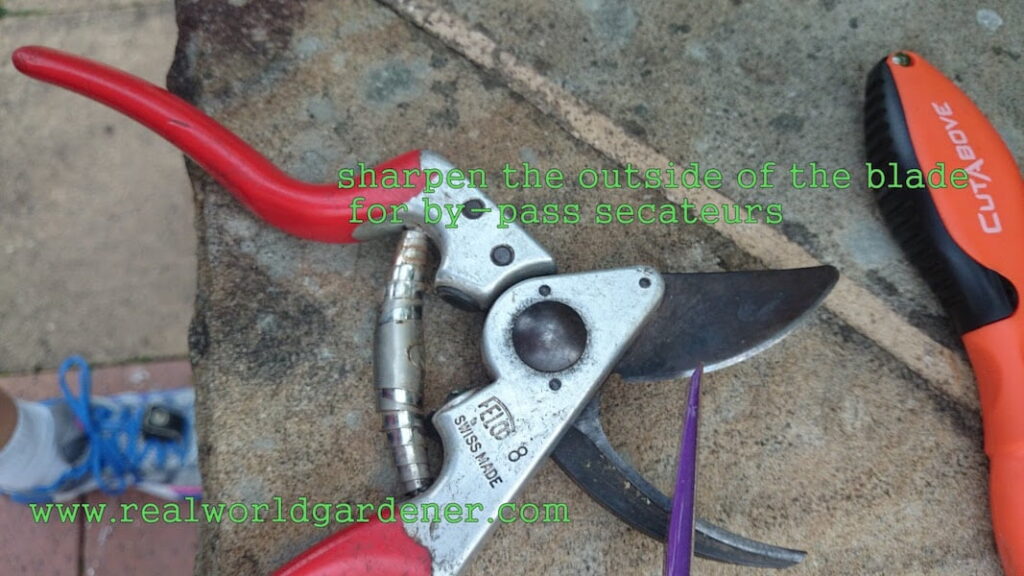
Only sharpen the outside of the cutting blade on your bypass secateurs
Now there are tungsten carbide sharpeners, which are extremely hard steel and set up so you don’t have to take the secateurs apart. But you need to get the right angle on the cutting blade – somewhere between 11 and 23% which isn’t easy to judge by eye! Start with a 90 degree angle, halve that, and then halve that again to get close to 20 degrees. There are also new tool sharpeners with pre-set angles that make it much easier by taking out the guesswork.
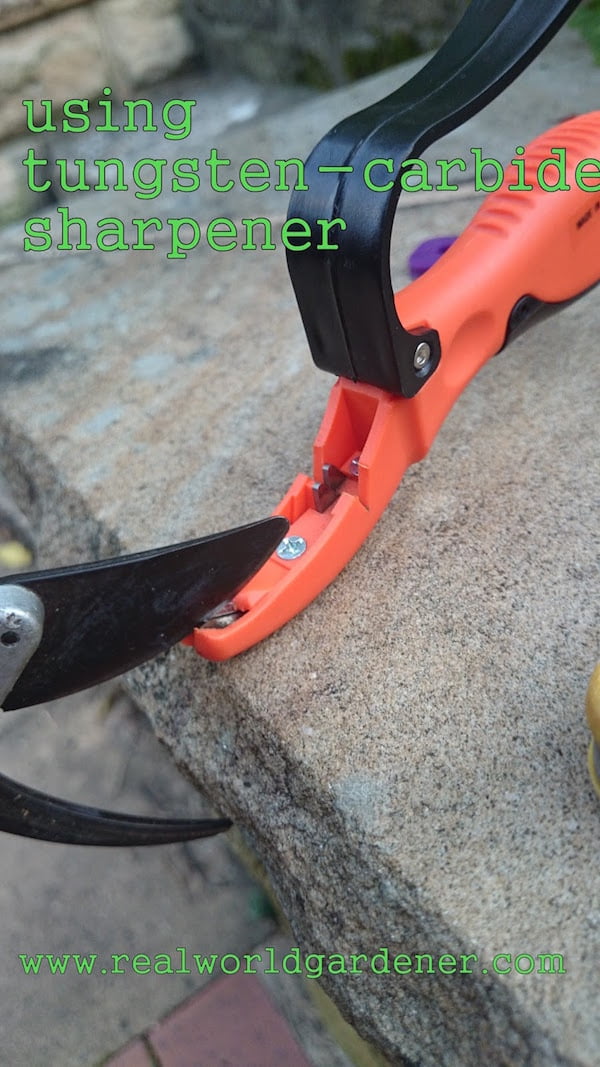
Listen while Tony explains how to sharpen your secateurs for that razor-sharp edge…
https://gardendrum.com/wp-content/uploads/2017/05/Sharpening-your-secateurs.mp3
